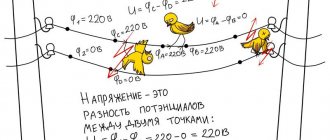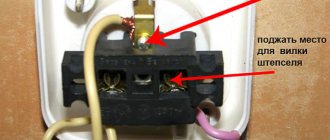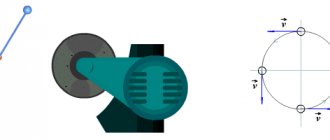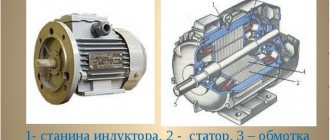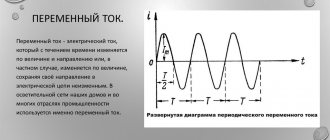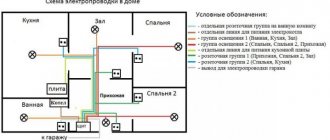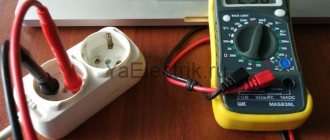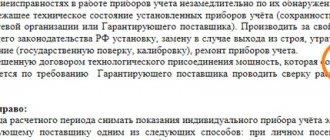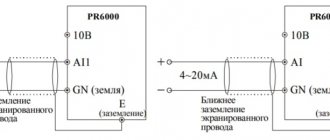What is the speed of current in the conductor? A trivial, if not rhetorical, question, isn’t it? We all studied physics at school and remember well that the speed of electric current in a conductor is equal to the speed of propagation of the front of an electromagnetic wave, that is, equal to the speed of light. But in those same physics lessons, we were shown a bunch of interesting experiments where we could see for ourselves. Let us recall at least the remarkable experiments with an electrophore machine, ebonite, permanent magnets, etc.
But experiments on measuring the speed of electric current were not shown even at the university, citing the lack of necessary equipment and the complexity of these experiments. Over the past few decades, applied science has made a huge leap forward and now many amateurs have equipment at home that even scientific laboratories did not dream of a few decades ago. Therefore, the time has come to begin to show experience in measuring the speed of electric current, so that the question would be closed once and for all in the best traditions of physics. That is, not at the level of mathematics of hypotheses and postulates, but at the level of simple experiments and experiments that are understandable to everyone.
The essence of the experiment to measure the speed of electric current is simple to the point of disgrace. Let's take a wire of a certain length, in our case 40 meters, connect to it a high-frequency signal generator and a two-beam oscilloscope, one beam, respectively, to the beginning of the wire, and the other to its end. That's all. The time it takes for an electric current to travel through a 40 meter long wire is about 160 nanoseconds. It is at this time that we should see a shift on the oscilloscope between the two beams. Let's now see what we see in practice
That is, as we have seen, there is no delay of 160 nanoseconds in our case. And it was in our case that we were unable to measure the speed of the electric current, because it turned out to be several orders of magnitude larger and cannot be measured with such instruments. Maybe our wires were advanced nanotechnology, or our electric current simply didn’t know that it had to stay for 160 nanoseconds in the wire? But it is what it is...
Due to the fact that only one experiment was carried out, it is too early to draw any conclusions. We hope that you will want to repeat this experience and share its results with us. We look forward to your video reports.
Source
Why doesn't current flow in sockets and wires at the speed of light? Or still...
Any person who understands physics will say that the speed of electric current is equal to the speed of light and is 300 thousand kilometers per second. On the one hand, he is 100% right, but there are nuances.
With light, everything is simple and transparent: the speed of flight of a photon is equal to the speed of propagation of a light beam.
With electrons it is more difficult. Electric current is very different from visible radiation. Why is it believed that the speed of photons in a vacuum and the speed of electrons in a conductor are the same? The statement is based on actual results. In 1888, the German scientist Heinrich Hertz experimentally established that an electromagnetic wave travels in a vacuum as quickly as light. But can we say that electrons in a conductor fly at the speed of light? We need to understand the nature of electricity.
Evidence-based experiments
The conclusions we have drawn are not just based on reasoning, but have also been proven empirically many times. Russian scientists Leonid Isaakovich Mandelstam (Figure 3) and Nikolai Dmitrievich Papaleksi (Figure 4) conducted a number of interesting experiments. These experiments were later confirmed by American physicists Balfour Stewart and Robert Tolman .
Figure 3. Leonid Isaakovich Mandelstam (1879 - 1944) - Russian and Soviet physicist, one of the founders of the scientific school of radiophysics
Figure 4. Nikolai Dmitrievich Papaleksi (1880 - 1947) - Russian and Soviet physicist, founder of radio astronomy
The essence of the experiments was as follows. It is already known that there are some free charges in the metal, and they have mass. Then they must experience inertia.
To test this assumption, a metal conductor had to be set in motion and then suddenly stopped. For convenience, we used a rotational movement rather than a translational one.
The metal wire was wound around a wooden frame and untwisted (Figure 5). After an abrupt stop, the occurrence of current was recorded using a galvanometer.
Figure 5. The experience of Mandelstam and Papaleksi
It was determined that it was the electrons that were flying out of the conductor. This was established by determining the ratio of the charge to the mass of its carrier. Scientists already had this data for the electron.
What is electric current?
From the school physics course it is known that electricity is a flow of electrons moving in an orderly manner in a conductor. While there is no source of electricity, electrons move chaotically in the conductor, in different directions. If you sum up the trajectories of all charged particles, you get zero. Therefore, a piece of metal does not give an electric shock.
If a metal object is connected to an electrical circuit, all the electrons in it will line up in a chain and flow from one pole to the other. How quickly will streamlining happen? At the speed of light in a vacuum. But this does not mean that the electrons flew from one pole to the other as quickly. It's a delusion. It's just that people are so used to the idea that electricity travels as fast as light that they don't think much about the details.
Disadvantages of the electronic theory of conductivity
Despite the fact that the electronic theory of conductivity of metals has explained a number of phenomena, it also has its drawbacks.
-
rho \sim \sqrt T\)), meanwhile, according to experience, ρ
~
T. - In order to obtain the values of the specific electrical conductivity of a metal obtained from experiment, it is necessary to take the mean free path of electrons to be hundreds of times greater than the lattice period of the metal. In other words, an electron must pass through hundreds of atoms without collisions with ions in the lattice.
- This theory could not explain the cause of superconductivity.
The above shortcomings indicate that the classical electronic theory, representing the electron as a material point subject to the laws of classical mechanics, did not take into account some specific properties of the electron itself, which were not yet known at the beginning of the 20th century. These properties were established later when studying the structure of the atom, and in 1924 a new, so-called quantum or wave mechanics
electron movement.
Popular misconceptions about the speed of light
Another example of such a superficial perception is the concept of the nature of lightning. How many people think about what physical processes occur during a thunderstorm? For example, what is the speed of lightning? Is it possible to find out at what height lightning strikes rage without instruments? Let's deal with all this in order.
Someone might say that lightning strikes at the speed of light, and they would be wrong. A flash caused by a giant electrical discharge in the atmosphere spreads so quickly, but lightning itself is much slower. A lightning bolt is not a laser-like beam of light, although it is visually similar. This is a complex structure in an atmosphere saturated with electricity.
The stepped leader or main lightning channel is formed in several stages. Each step, tens of meters long, is formed at a speed of about 100 km/sec along the discharge threads of ionized particles. The direction changes at each stage, so the lightning looks like a sinuous line. 100 kilometers per second is fast, but it is very far from the speed of an electromagnetic wave. Three thousand times.
Which is faster: lightning or thunder?
This children's question has a simple answer - lightning. From the same school physics course it is known that the speed of sound in air is approximately 331 m/sec. Almost a million times slower than an electromagnetic wave. Knowing this, it is easy to understand how to calculate the distance to lightning.
The flash light reaches us at the moment of discharge, but the sound travels longer. It is enough to detect the time interval between the flash and thunder. Now we simply calculate how far from us the lightning struck, using a simple formula:
L =T × 331
Where T is the time from the flash to the thunder, and L is the distance from us to the lightning in meters.
For example, thunder struck 7.2 seconds after the flash. 331 × 7.2 = 2383. It turns out that lightning struck at an altitude of 2 kilometers 383 meters.
Dependence of resistance on temperature
Experience shows that at not too high and not too low temperatures, the dependence of resistivity on temperature is expressed by a linear function:
\(~\rho = \rho_0 \cdot (1 + \alpha \cdot \Delta t),\)
where Δt
=
t
-
t
0,
t
t
respectively , α is the temperature coefficient of resistance, measured in SI in Kelvin to the minus first power (K-1 ) (or °C-1).
- The temperature coefficient of resistance of a substance
is a value numerically equal to the relative change in the resistivity of the conductor when it is heated by 1 K:
\(~\alpha = \dfrac{\Delta \rho}{\rho_0 \cdot \Delta T} ,\)
For all metallic conductors α > 0 and varies slightly with temperature. For most metals, in the temperature range from 0° to 100°C, the coefficient α varies from 3.3⋅10–3 to 6.2⋅10–3 K–1 (Table 1). For chemically pure metals α = 1/273 K-1.
- There are special alloys whose resistance practically does not change when heated, for example, manganin
and
constantan
. Their temperature coefficients of resistance are very small and equal to 1⋅10–5 K–1 and 5⋅10–5 K–1, respectively.
Table 1.
Temperature coefficient of resistance
(at t from 0 °C to 100 °C)
| Substance | α, 10–3 °K–1 | Substance | α, 10–3 °K–1 |
| Aluminum | 4,2 | Nichrome | 0,1 |
| Tungsten | 4,8 | Tin | 4,4 |
| Iron | 6,0 | Platinum | 3,9 |
| Gold | 4,0 | Mercury | 1,0 |
| Brass | 0,1 | Lead | 3,7 |
| Magnesium | 3,9 | Silver | 4,1 |
| Copper | 4,3 | Steel | 4,0 |
| Nickel | 6,5 | Zinc | 4,2 |
If we neglect the change in the dimensions of the metal conductor when heated, then its resistance will have the same linear dependence on temperature
\(~R_t = R_0 \cdot (1 + \alpha \cdot \Delta t) ,\)
where R
0,
R t
- conductor resistance at 0 °C and
t
°C.
Dependence of the resistivity of metal conductors ρ on temperature t
shown in Figure 2.
Fig.
2 The dependence of metal resistance on temperature is used in resistance thermometers. Usually, platinum wire is used as the thermometric body of such a thermometer, the dependence of whose resistance on temperature has been sufficiently studied. Temperature changes are judged by changes in wire resistance, which can be measured. Such thermometers allow you to measure very low and very high temperatures when conventional liquid thermometers are unsuitable.
Superconductivity
In 1911, the Dutch physicist G. Kamerlingh-Onnes, studying the change in the electrical resistance of mercury at low temperatures, discovered that at a temperature of about 4 K (i.e. at –269 °C) the resistivity abruptly decreases (Fig. 3) to zero. G. Kamerlingh-Onnes called this phenomenon superconductivity
.
Rice. 3 G. Kamerlingh Onnes was awarded the Nobel Prize
in Physics in 1913 “for his studies of the properties of matter at low temperatures.”
Later it was found that more than 25 chemical elements - metals - become superconductors at very low temperatures. Each of them has its own critical temperature for transition to a state with zero resistance. Its lowest value is for tungsten - 0.012 K, the highest for niobium - 9 K.
Superconductivity is observed not only in pure metals, but also in many chemical compounds and alloys. Moreover, the elements themselves that make up the superconducting compound may not be superconductors. For example, NiBi, Au2Bi, PdTe, PtSb and others.
Until 1986, superconductors were known that possessed this property at very low temperatures—below –259 °C. In 1986-1987, materials were discovered with a transition temperature to the superconducting state of about –173 °C. This phenomenon is called high-temperature superconductivity.
, and to observe it, liquid nitrogen can be used instead of liquid helium.
Until recently, the widespread use of superconductivity was hampered by difficulties associated with the need for cooling to ultra-low temperatures, for which liquid helium was used. Nevertheless, despite the complexity of the equipment, the scarcity and high cost of helium, since the 60s of the 20th century, superconducting magnets have been created without thermal losses in their windings, which has made it practically possible to obtain strong magnetic fields in relatively large volumes. It is these magnets that are required to create controlled thermonuclear fusion installations with magnetic plasma confinement, and for powerful charged particle accelerators. Superconductors are used in a variety of measuring instruments, primarily in instruments for measuring very weak magnetic fields with extreme precision.
Based on superconducting films, a number of high-speed logical and storage elements for computers have been created. In space research, it is promising to use superconducting solenoids for radiation protection of astronauts, docking of ships, their braking and orientation, and for plasma rocket engines.
Currently, ceramic materials have been created that exhibit superconductivity at higher temperatures—over 100 K, that is, at temperatures above the boiling point of nitrogen. The ability to cool superconductors with liquid nitrogen, which has an order of magnitude higher heat of vaporization, significantly simplifies and reduces the cost of all cryogenic equipment and promises a huge economic effect.
See also
- Wikipedia Superconductivity
- Buzdin A., Varlamov A. Passion for superconductivity at the end of the millennium // Quantum. - 2000. - No. 1. - P. 2-8.
- Myakishev G.Ya. Physics: Electrodynamics //§2.6. Superconductivity
The speed of an electromagnetic wave is not the speed of current
Now let's be more attentive to numbers and terms. Using the example of lightning, we were convinced that a small incorrect assumption can lead to big mistakes. It is precisely known that the speed of propagation of an electromagnetic wave is 300,000 kilometers per second. However, this does not mean that the electrons in the conductor move at the same speed.
Let's imagine that two teams are competing to see who can get the ball from one end of the field to the other the fastest. A prerequisite is that each team member take several steps with the ball in their hands. One team has five people, and the other has one. Five of them, lined up in a chain, will play a pass, each taking a few steps in the direction from start to finish. A single person will have to run the entire distance. Obviously, five people will win, because the ball flies faster than a person can run.
It's the same with electricity. Electrons “run” slowly (their own speed of elementary particles in a directed flow is calculated in millimeters per second), but they transfer the “ball” of charge to each other very quickly. In the absence of a potential difference at the opposite ends of the conductor, all electrons move chaotically. This is thermal movement present in every substance.
Literature
- Aksenovich L. A. Physics in secondary school: Theory. Tasks. Tests: Textbook. allowance for institutions providing general education. environment, education / L. A. Aksenovich, N. N. Rakina, K. S. Farino; Ed. K. S. Farino. - Mn.: Adukatsiya i vyakhavanne, 2004. - CC 256-257, 279-282.
- Burov L.I., Strelchenya V.M. Physics from A to Z: for students, applicants, tutors. - Mn.: Paradox, 2000. - P. 213-218.
- Zhilko, V.V. Physics: textbook. allowance for 10th grade. general education school from Russian language training / V.V. Zhilko, A.V. Lavrinenko, L. G. Markovich. —Mn.: Nar. Asveta, 2001. - pp. 86-89.
If electrons moved in wires at the speed of light
Let's imagine that the speed of electrons in a conductor is still close to light speed. In this case, modern energy would be impossible in the form we are accustomed to. If electrons moved along wires, flying 300,000 kilometers per second, very complex technical problems would have to be solved.
The most obvious problem: at this speed, the electrons will not be able to follow the turns of the wires. Having accelerated on a straight section, charged particles will fly out tangentially, like cars that do not fit into a turn. To keep electrons flying at cosmic speeds inside energy highways, the wires will have to be equipped with electromagnetic traps. Each section of the wiring will become like a fragment of a hadron collider.
Fortunately, elementary particles move much more slowly and bare aluminum wires for power lines are quite suitable for transmitting energy over long distances
We hope that after reading this review, you found the answer to the question why current does not flow through cables at the speed of light and remembered something from the school physics course, and this, you see, is extremely useful at any age.
Source
Problem solving
Carrying out calculations helps not only to consolidate theoretical material, but also to learn the practical application of knowledge. Thus, the application of Ohm's law allows you to correctly calculate electrical circuits and select the required resistance. Here are some of the typical tasks designed for seventh grade students:
- Determine the voltage on the winding of the electric starter if, when a charge passes through it, the electric field does 10 joules of work. The field strength is 4 V, and the effective force is 8 N. In order to determine the voltage, you need to calculate the amount of charge. This can be done from the expression: E = F / q. Hence q = F / E = 8 N / 4 V = 2 C. Now you can use the formula: U = A / q. All the necessary data is known, so after substituting the values and calculating the answer should be: U = 10 J / 2 C = 5 V.
- Calculate the maximum voltage that can be applied to an electric lamp with a resistance of 500 Ohms if it is lit at full heat at a current of 0.5 amperes. According to Ohm's law, voltage and current are related by the formula: I = U / R. From it, voltage can be expressed: U = I * R = 0.5 A * 500 Ohm = 250 V.
- When transferring 240 C of electricity from one point in the circuit to another, 120 J of work is performed in 16 minutes. Find the voltage and current. The electric current can be calculated from the relationship: I = q / t, and the voltage using the formula: U = A / q. Substituting the original data, you can get: I = 240 C / 16 * 60 s = 0.25 A and U = 1200 J / 240 C = 5 V.
- What will be the current strength if 0.8 J of electricity is consumed in one second at a voltage of 4 V? To solve the problem, you need to remember how electric current and voltage depend on the amount of charge. By writing down the ratios and substituting one into the other, you get the formula: I = A / U * t = 0.8 J * C / 4 V * s = 0.2 A = 200 mA.
Thus, to solve problems related to electrical voltage, you need to remember several formulas and understand the essence of the process. But it is important to know the dimensions of quantities. Moreover, all calculations are usually performed in the International System of Units. You should also know that the speed of ordered movement of charge carriers depends on the action of the external electric field. And it is found as V = I / q * n *S, where n is the concentration (tabular value), q is the charge, S is the cross-sectional area of the conductor.
